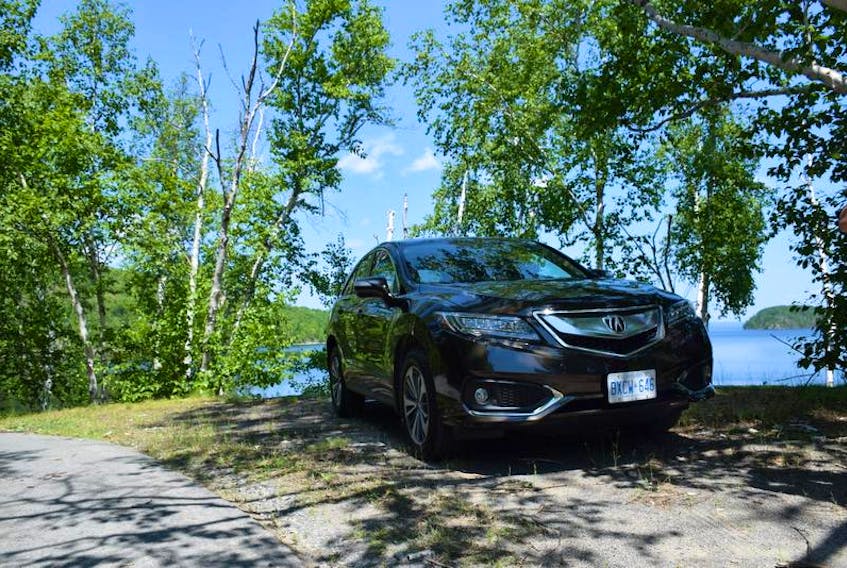Model: 2013-18 Acura RDX
Vehicle type: Luxury crossosver
History/description: The second-generation Acura RDX arrived in 2012 with a standard V6 engine, new looks and more refinement and comfort than its predecessor.
Look for an intelligent all-wheel-drive (AWD) system, a standard sunroof, xenon headlights, the Acura HandsFreeLink Bluetooth system, push-button ignition and plenty more.
This model is highly-rated for owner satisfaction, owner loyalty, reliability and high resale values. Consider it alongside comparable models from Cadillac, BMW, Audi, Infiniti, Mercedes and Volvo.
Acura’s proven and efficient 3.5-litre V6 generated 273 highly-efficient horsepower. All units got an automatic transmission and AWD.
What owners like: A roomy and flexible interior, decent ride quality, a nicely-trimmed cabin, a smooth and punchy engine, generous storage and all-weather confidence are all reported by owners. The up-level stereo is a feature content favourite, and the LED headlights are commonly reported to be highly effective.
What owners dislike: Common complaints include sometimes-startling adjustments to vehicle speed via the adaptive cruise control and ride quality that degrades rapidly on rougher roads.
The test drive: Start by confirming that all on-board electronics and equipment are in working order, including the power seats and their memory and heating functions, the navigation and Bluetooth systems, the climate control, all instruments and screens, all controls mounted to the steering-wheel, and anything else on board that runs on electricity.
A weak battery in the remote keyfob, or a weak vehicle battery, may be to blame if the RDX doesn’t fire up instantly when the “engine-start” button is pressed. Further, if equipped, run the power tailgate through its paces several times: if it fails to work properly, the tailgate computer may need to be reset, or an adjustment may be needed to the tailgate latch.
A detectable thud or slam upon the brakes being released from a stop may be caused by some rust or debris that’s become lodged between the brake rotor and pads.
Typically, this problem will disappear after the brakes have been used a few times on a given drive, though continued unwelcome sensations from the brakes warrant further investigation. This problem, if detected, may be more likely after rain or snow.
Check that the rain-sensing wipers are working properly by setting them to “auto,” and wetting the windshield exterior, opposite the rear-view mirror mounting point.
If this fails to trigger the wipers, a bad sensor in the rain-detection system is likely to blame, and will need to be replaced. Note that the wipers will still work on their manual setting in this case.
An unusual vibration or shudder may be detected through the RDX’s driveline at certain specific speeds and RPMs. If detected, the issue can likely be remedied with the installation of updated driveline software installed by the dealer.
A speed-dependant vibration may, additionally, be the result of a badly-insulated propeller shaft, and especially if the vibrations are detected more commonly in cold temperatures.
Acura issued a service bulletin to their dealers to help solve this problem. In this case, the fix involves installation of a revised propeller shaft.
Sensations like those above may also be caused by a problem with the vehicle’s transmission programming or internals, or by worn CV joints. In any case, have any unwanted vibrations investigated professionally.
Numerous owners have reported wonky operation of several sensor-driven systems in the RDX, including parking radar sensors, and sensors relating to the collision mitigation braking system.
False alarms are common if the sensors are acting up, as are warning messages displayed in the instrument cluster.
Various factors can contribute to these difficult-to-diagnose issues, though ensuring all forward-facing sensors are clear of obstructions, and that the vehicle’s battery is healthy, may help considerably.
Shoppers are advised to check the engine oil level and condition (as per instructions in the owner’s manual), and to keep monitoring it often during ownership.
Report any concerns about oil consumption to your local dealer service department for documentation, in case any warranty claim is required down the line.
Oil consumption doesn’t seem common with this generation RDX, though it’s worth being on the lookout.
Finally, note that some owners have reported the need to replace weak batteries, worn driver seats and brake system components, typically at lower mileage and almost exclusively under warranty. Premature battery wear and replacement seems to be one of the RDX’s more commonly-reported problems.
The verdict: The most commonly-reported issues with this generation RDX seem minor in nature and should be easy to detect via a pre-purchase inspection by a technician. A healthy used RDX should provide access to confident and sensible luxury motoring for years to come.









